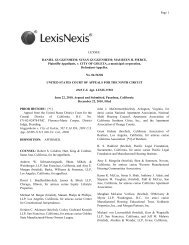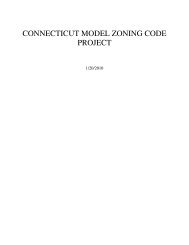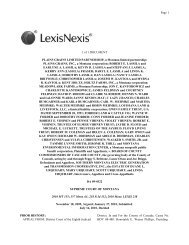Through a Glass Darkly: Measuring Loss Under ... - Land Use Law
Through a Glass Darkly: Measuring Loss Under ... - Land Use Law
Through a Glass Darkly: Measuring Loss Under ... - Land Use Law
Create successful ePaper yourself
Turn your PDF publications into a flip-book with our unique Google optimized e-Paper software.
MEASURING LOSS UNDER MEASURE 37 609<br />
from the enactment of the land use regulation, or the facial effect,<br />
may not be as consistent with the text and context of the Measure as<br />
other explanations. A better and more accurate interpretation of the<br />
text, context, and legislative history of section 197.352 is one that<br />
captures the differential, at the date of the claim, between that current<br />
fair market value of the land (when the regulation has been both<br />
enacted and enforced) and the fair market value had the regulation<br />
never been enacted or enforced (the hypothetical). This is the differential<br />
which the valuation methodologies in the third conceptual category<br />
attempt to assess. In order to capture this differential accurately,<br />
the devaluation must be viewed in a more holistic manner than Sercombe<br />
proposes: not only should the facial effects of enactment be<br />
considered, but also the ongoing effects which flow from the passive<br />
enforcement of the land use regulation. In the following section each<br />
of the statutory interpretative reference points highlighted in Portland<br />
General Electric Co.—the text, context, and the legislative history—will<br />
be analyzed in turn to demonstrate how they provide<br />
support such for an interpretation.<br />
D. Textual Analysis<br />
1. “REDUCTION”<br />
The term “reduction” within the first sentence of subsection<br />
197.352(2) demands that, as a prerequisite to any successful claim,<br />
the property has, after adjustment for inflation, been reduced in value<br />
by the enactment or enforcement of the land use regulation. As we<br />
have seen this requirement has already undermined any support for<br />
the exemption method, however there are further ambiguities with<br />
the term “reduction.” One might argue, for instance, that the phrase<br />
“reduction in the fair market value of the affected property” implies<br />
that there has to be, as a precondition to a compensation claim, a net<br />
reduction in value of the property in real terms. In this case one<br />
would need to ask the antecedent question, “[H]as there been a net<br />
reduction in the property’s fair market value from the time of enactment<br />
of the land use regulation” If the answer is no, then this automatically<br />
ends the claim; on the other hand, if the answer is yes,<br />
further analysis is required to determine whether the reduction in<br />
value “result[ed] from the enactment or enforcement of a land use<br />
regulation” or from some other source. 152<br />
152. Sercombe, supra note 122, at 3.<br />
ABA-TUL-07-0701-Sullivan.indd 609<br />
9/18/07 10:43:45 AM







